Capitals in Sicily
Beautiful capital in the Monreale Cathedral
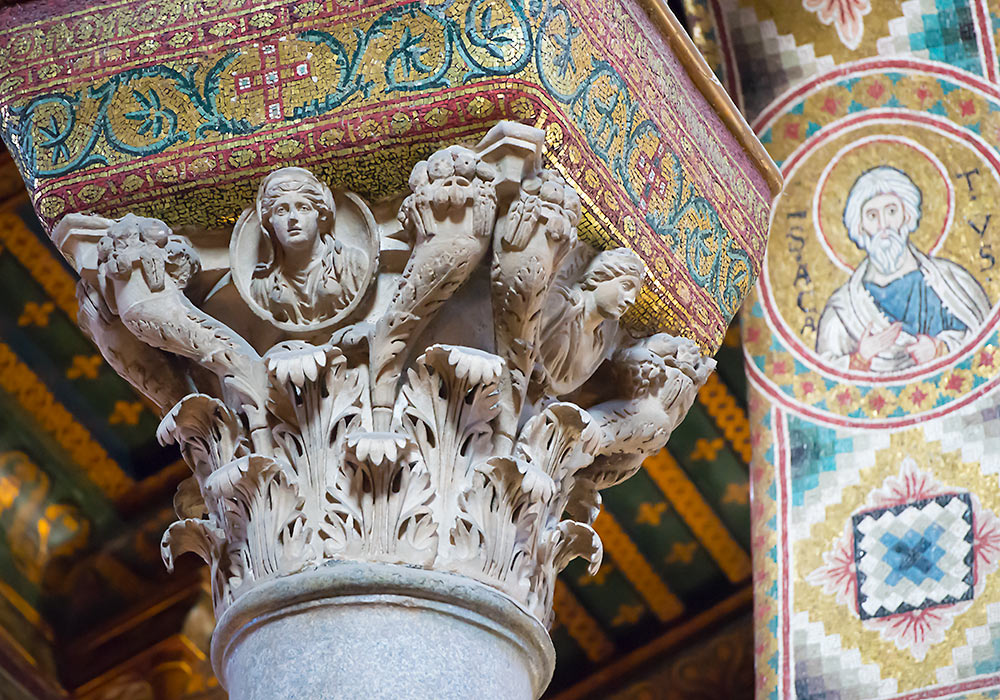
Capital in the Monreale cathedral.
See photos of the Monreale cathedral here …
Monreale - the Benedictine Cloister
The Benedictine Cloister was completed c. 1200. It measures 47x47 metres and is located on the south side of the cathedral. Each side has 26 arches resting on columns. The splendid capitals include narrative cycles from the Old and New Testaments.
Capitals in the Benedictine Cloister, Monreale
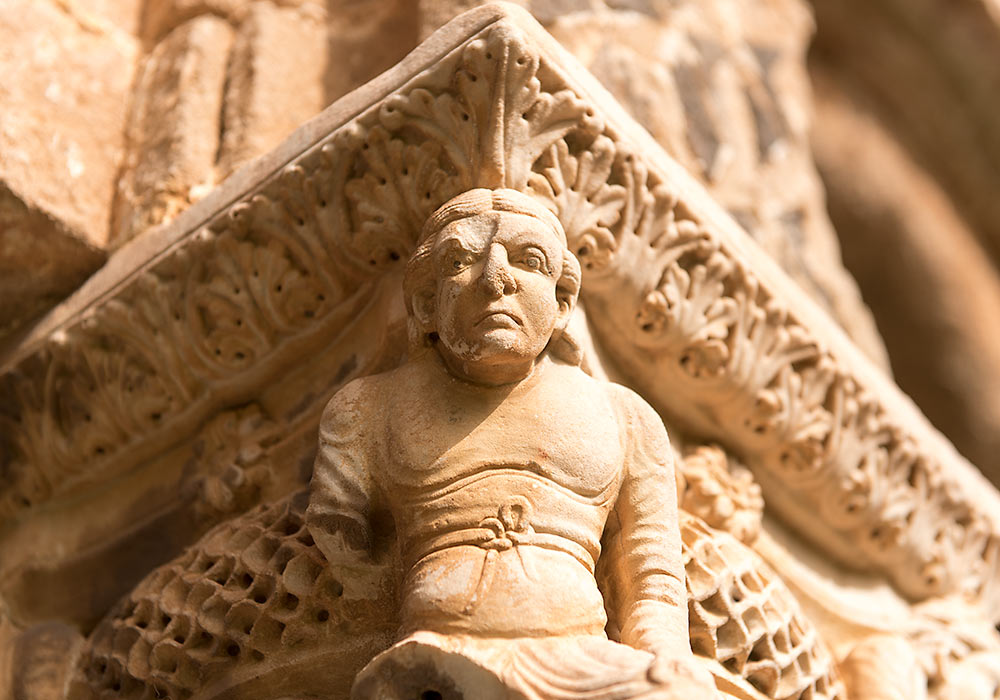
The capitals in the cloister of the abbey of Monreale were carved from white marble, but over time has acquired a thick, sandstone patina that covers them almost entirely.
See photos of the Benedictine Cloister in Monreale here …
Romanesque capitals
“Shortly before the turn of the twelfth century, a type of capital emerged in Romanesque sculpture which profoundly influenced the overall character of sacred spaces and monastic cloisters and became a primary element of medieval sculptural decoration of architecture. Previously, capital decoration had confined itself mainly to ornamental, vegetative, zoomorphic, or anthropomorphic forms. Now, however, it broadened its spectrum to include narrative cycles, thus taking on the added function of depicting stories from the Old and New Testaments, historical events, exempla, satirical scenes, and allegories. As an integral architectural component, the Romanesque capital incorporated this new narrative element into its particular physical character. Its three-dimensional aspect lent itself particularly to cloisters, where free-standing columns could be viewed from all sides. Thus, they provided the possibility of telling stories through a series of relief compositions, while facilitating a dialogue among and between capitals and other decorative elements of the cloister (Dercks 2006).” (Ute Dercks: CENOBIUM 10 YEARS AFTER: AN EVOLVING PLATFORM FOR DIGITAL HUMANITIES, in Archeologia e Calcolatori Supplemento 10, 2018, 123-141.) CENOBIUM is a web-based system designed to support the work of art historians.
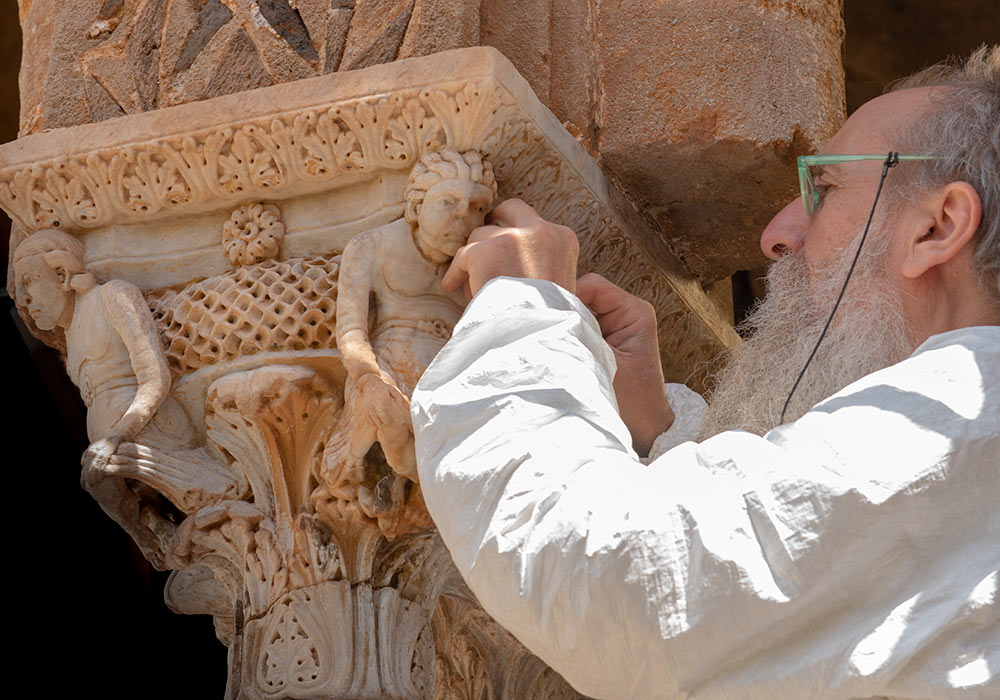
The Benedictine Cloister at Monreale (Chiostro dei Benedettini) was completed c. 1200. Each side has 26 arches resting on columns. The splendid capitals include narrative cycles from the Old and New Testaments. Here one of the capitals is being restored.
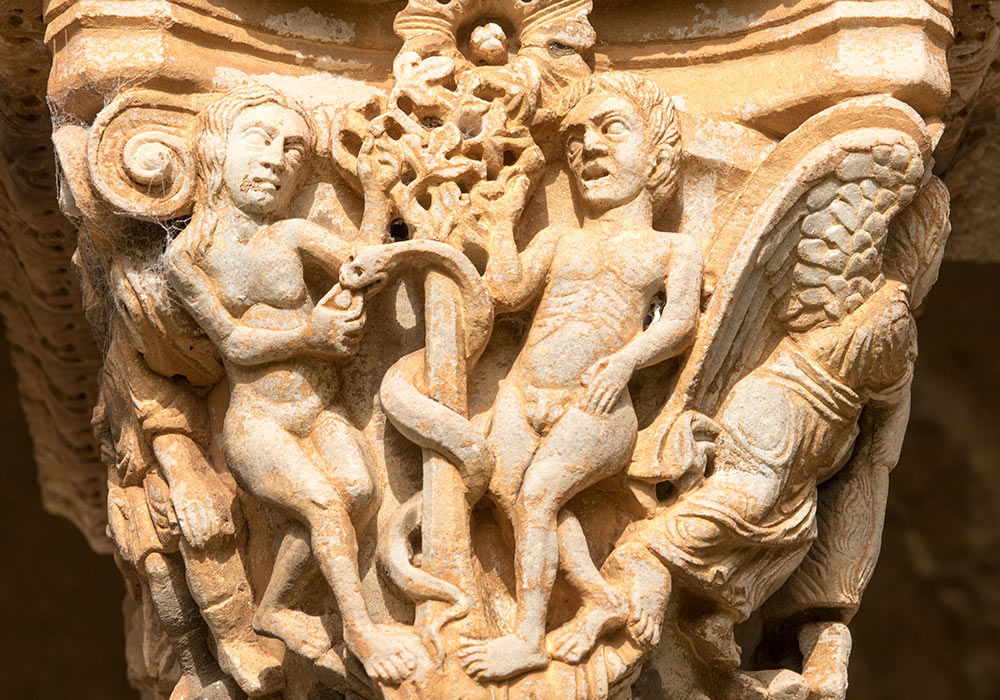
Adam and Eve are shown naked next to the Tree of Knowledge. Eve reaches for the forbidden fruit.
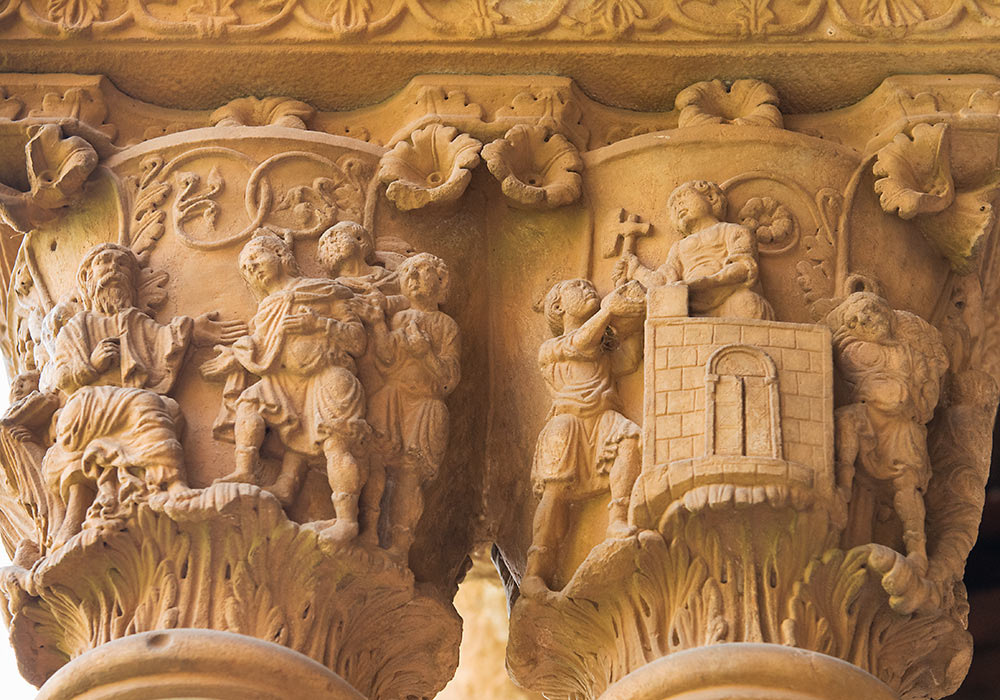
Photo: Per-Erik Skramstad / Wonders of Sicily
See photos of the Benedictine Cloister in Monreale here …
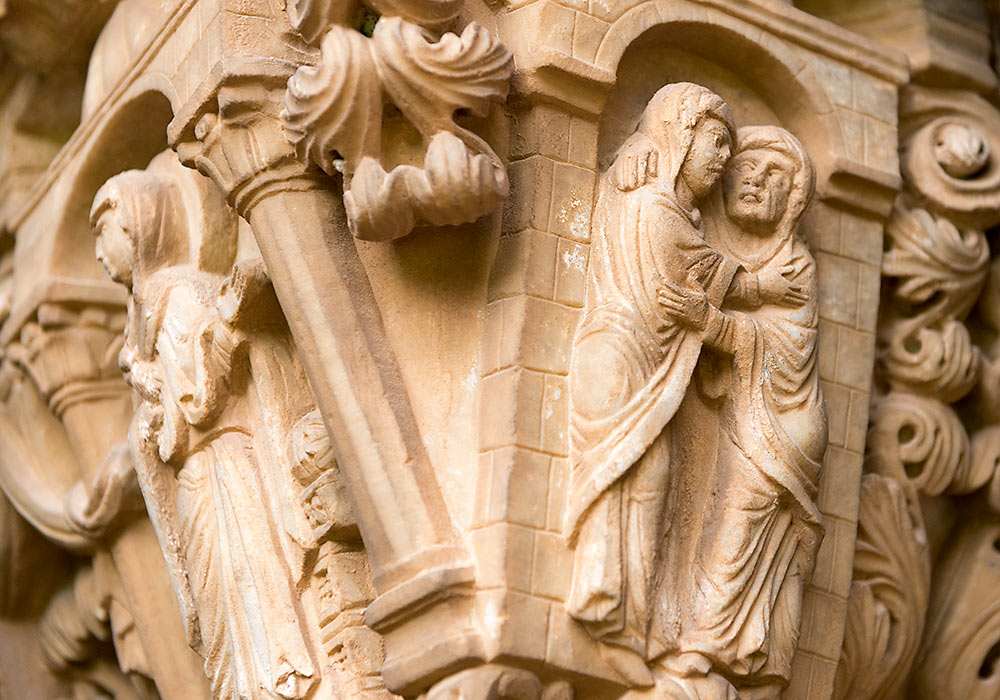
Mary visits Elizabeth.
Now Mary arose in those days and went into the hill country with haste, to a city of Judah, and entered the house of Zacharias and greeted Elizabeth. And it happened, when Elizabeth heard the greeting of Mary, that the babe leaped in her womb; and Elizabeth was filled with the Holy Spirit. Then she spoke out with a loud voice and said, “Blessed are you among women, and blessed is the fruit of your womb! But why is this granted to me, that the mother of my Lord should come to me? For indeed, as soon as the voice of your greeting sounded in my ears, the babe leaped in my womb for joy. Blessed is she who believed, for there will be a fulfillment of those things which were told her from the Lord.” (Luke 1, 39-45 New King James Version)
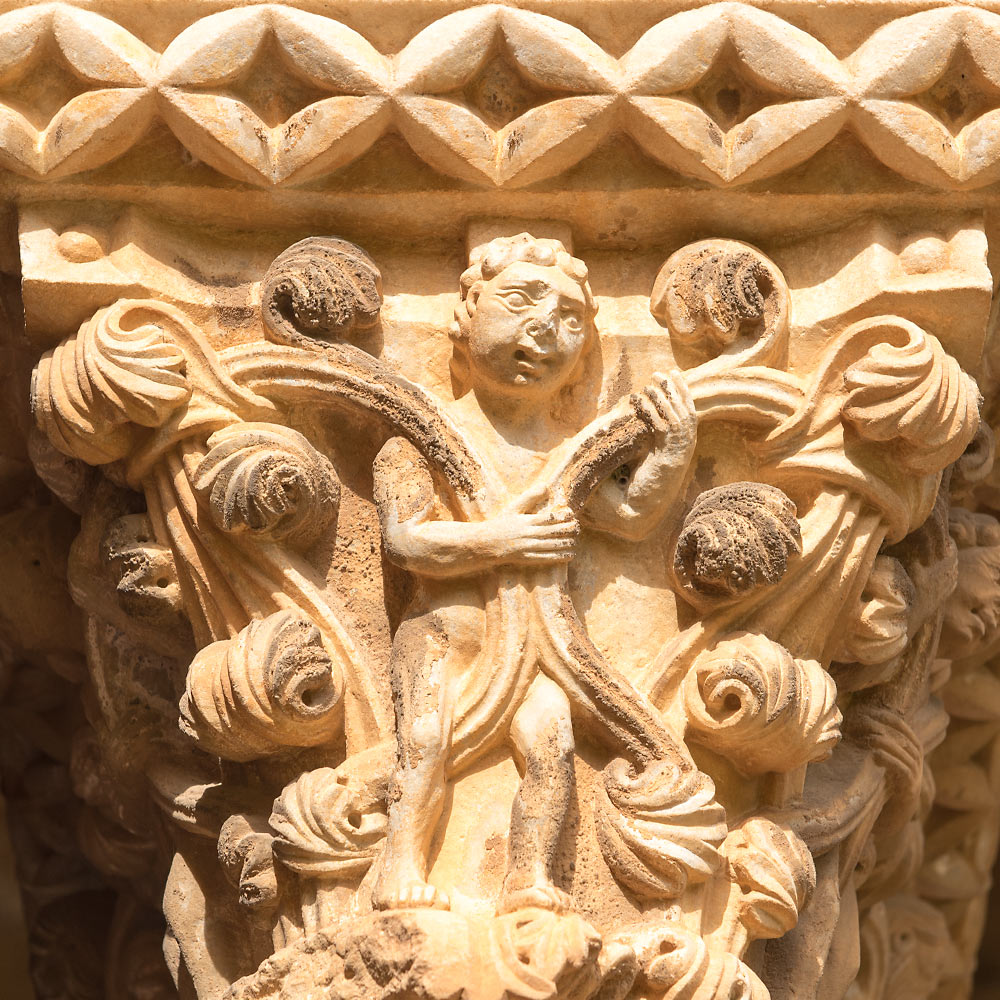
Photo: Per-Erik Skramstad / Wonders of Sicily
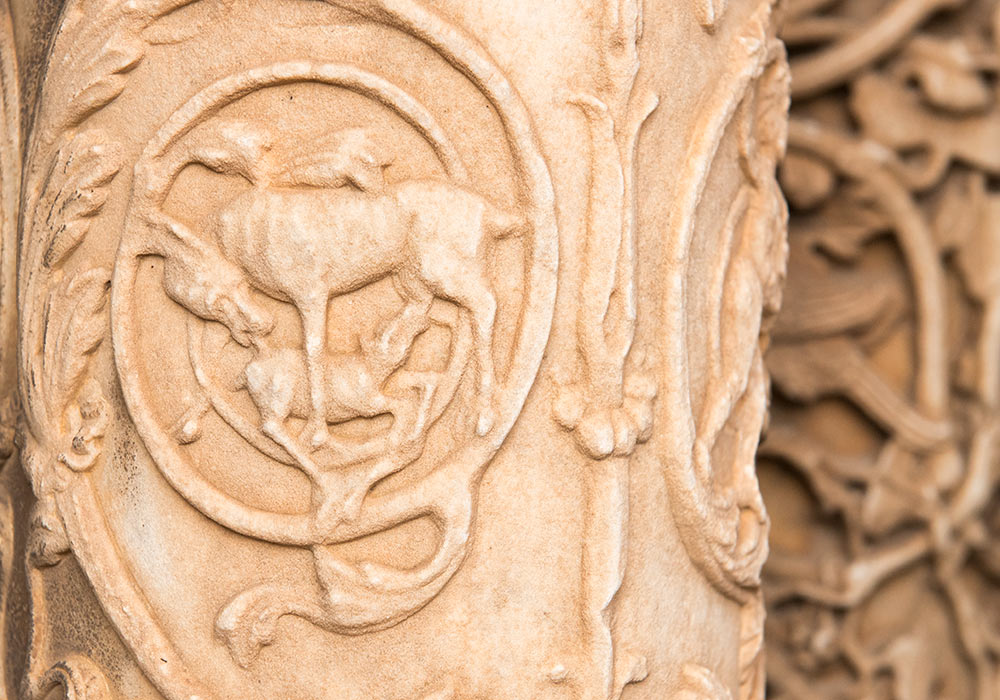
See photos of the Benedictine Cloister in Monreale here …
Capitals in Cefalù Cathedral
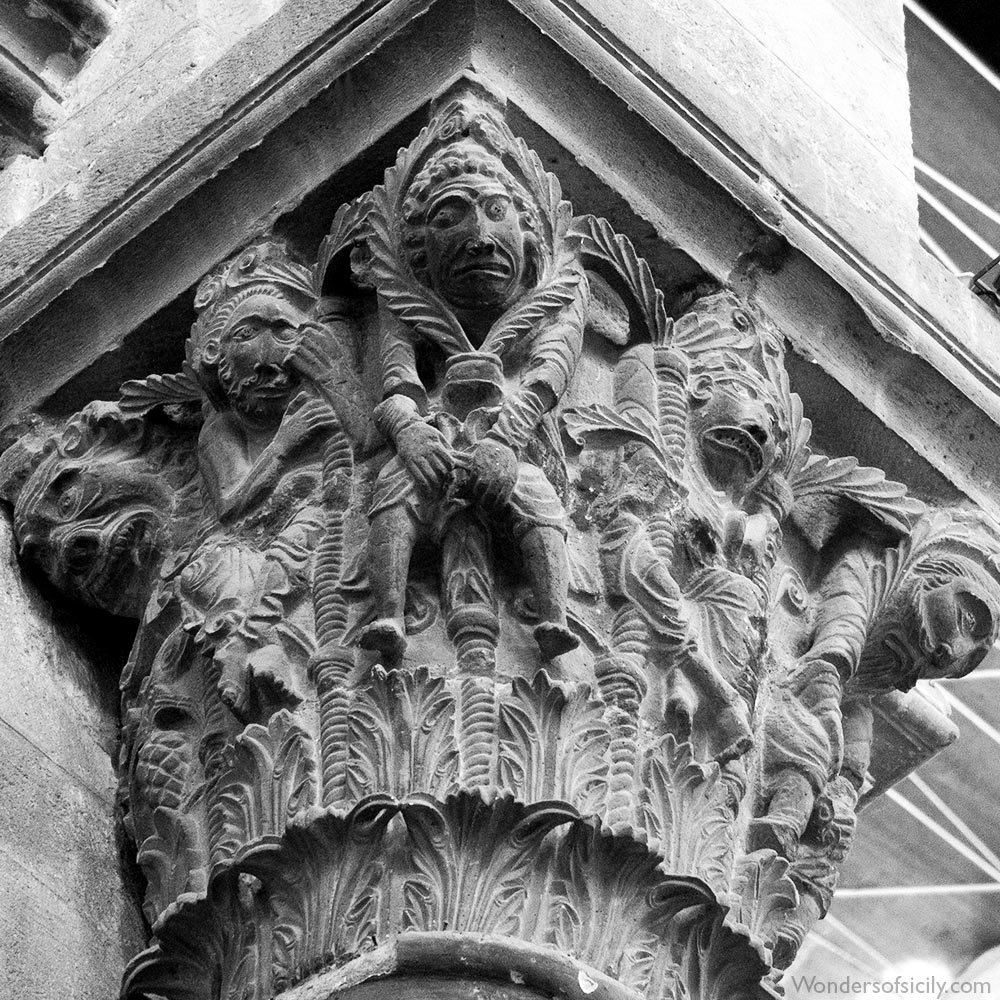
Capital, C12. Cefalù cathedral.
See photos of the Cefalù cathedral here …
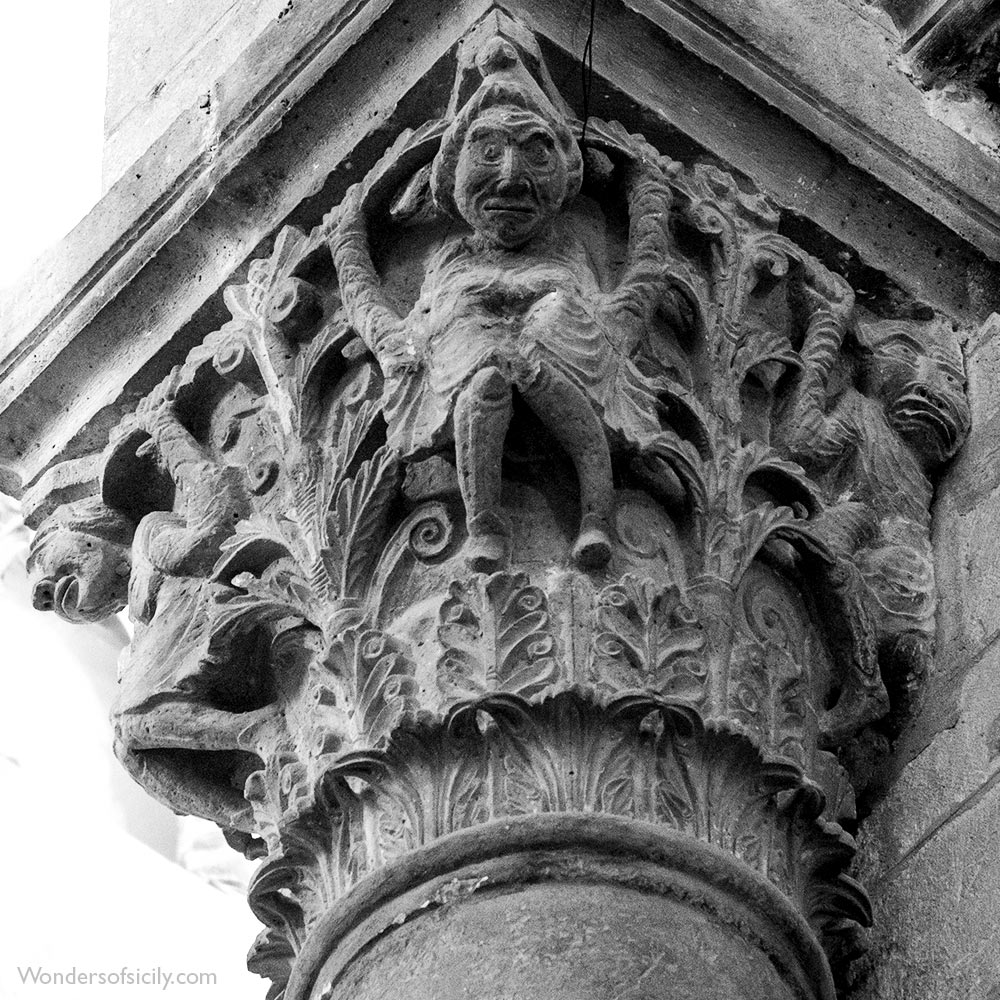
Capital, C12. Cefalù cathedral.
See photos of the Cefalù cathedral here …
San Cataldo
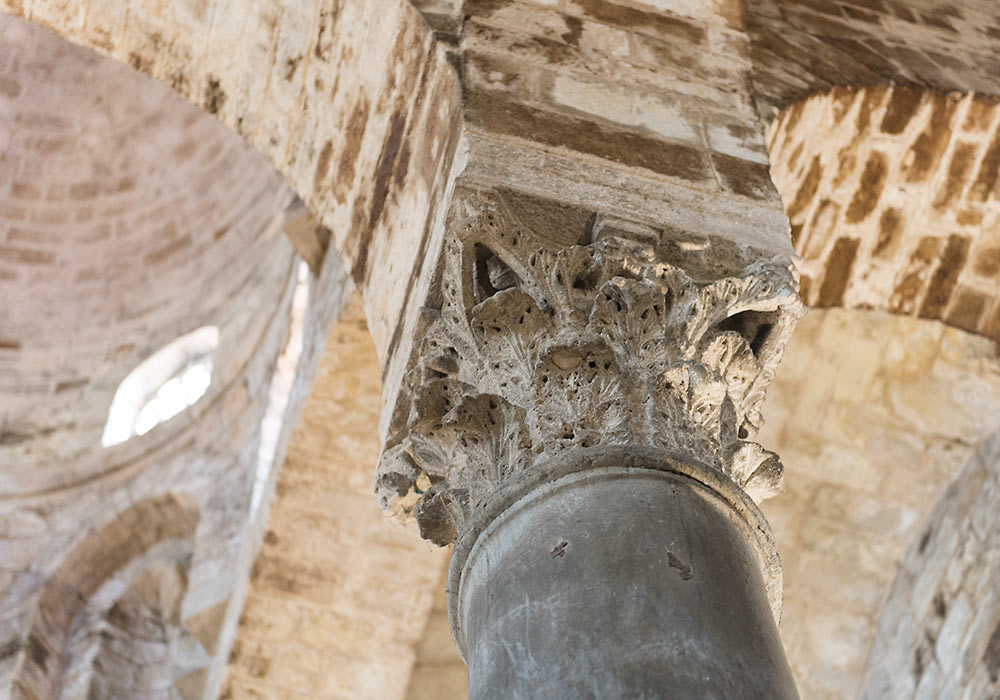
One of the surviving capitals in San Cataldo. The capitals in San Cataldo are all different.
Photo: Per-Erik Skramstad / Wonders of Sicily
See photos of San Cataldo here …
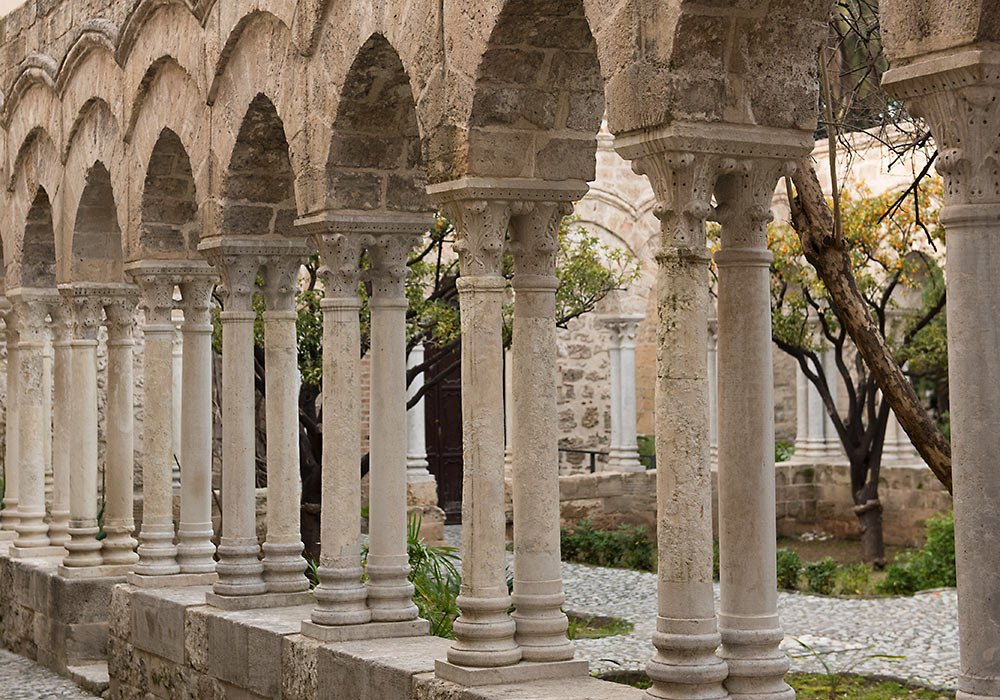
Twin columns in the beautiful cloister garden (13th century) at San Giovanni degli Eremiti.
Photo: Per-Erik Skramstad / Wonders of Sicily
See photos from San Giovanni degli Eremiti here …
UNESCO’s World Heritage List
Arab-Norman Palermo and the Cathedral Churches of Cefalú and Monreale (Italy) - new on the list (2015)
Located on the northern coast of Sicily, Arab-Norman Palermo includes a series of nine civil and religious structures dating from the era of the Norman kingdom of Sicily (1130-1194): two palaces, three churches, a cathedral, a bridge, as well as the cathedrals of Cefalú and Monreale. Collectively, they are an example of a social-cultural syncretism between Western, Islamic and Byzantine cultures on the island which gave rise to new concepts of space, structure and decoration. They also bear testimony to the fruitful coexistence of people of different origins and religions (Muslim, Byzantine, Latin, Jewish, Lombard and French).
Palermo
- Palazzo dei Normanni (The Norman Palace)
- Cappella Palatina (The Palatine Chapel in the Norman Palace)
- Church of San Giovanni degli Eremiti
- Church of Santa Maria dell'Ammiraglio (also known as the Martorana)
- Church of San Cataldo
- Cathedral of Palermo
- The Zisa Palace (La Zisa)
- The Cuba Palace (La Cuba)
Norman Cathedrals

